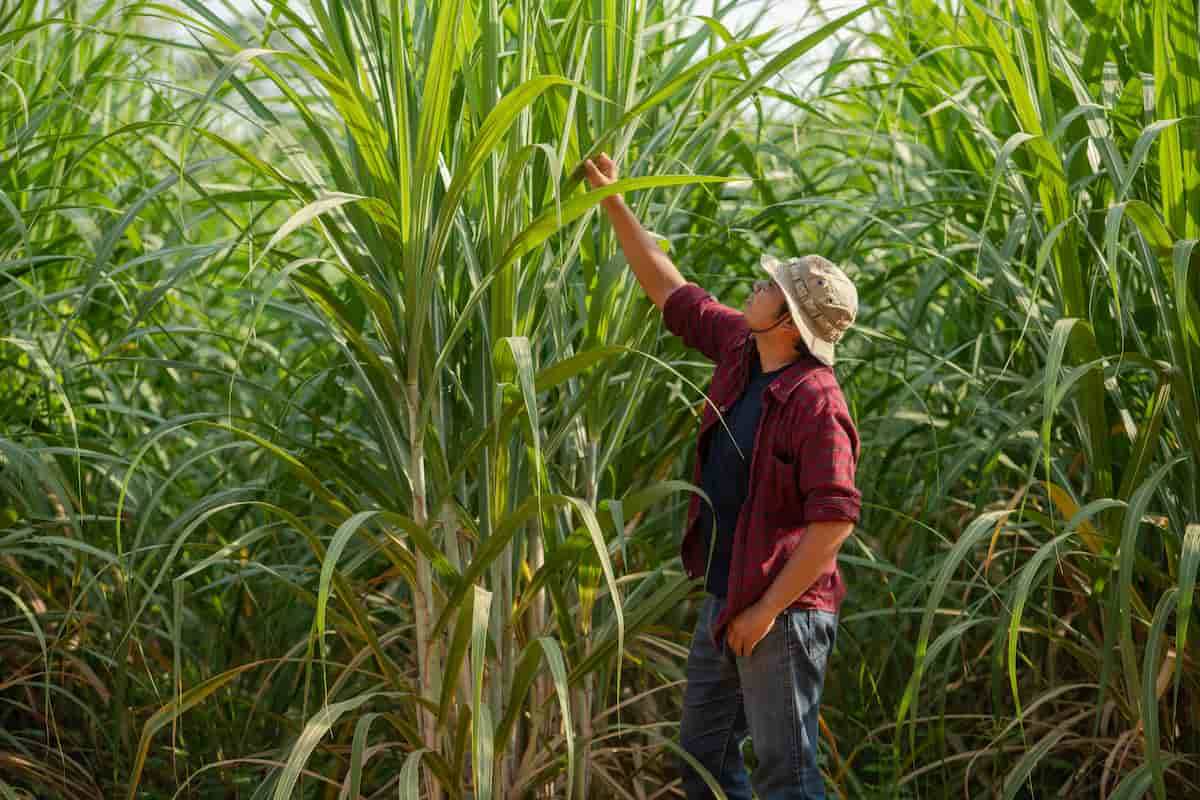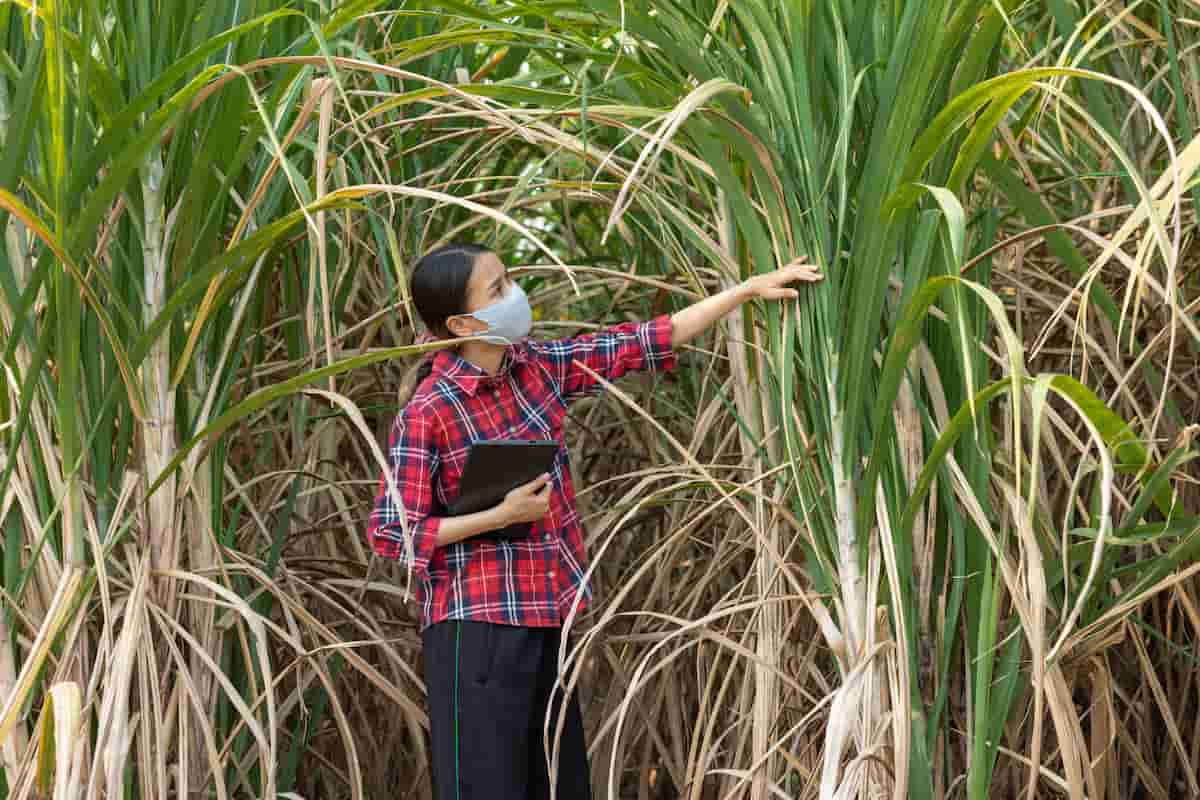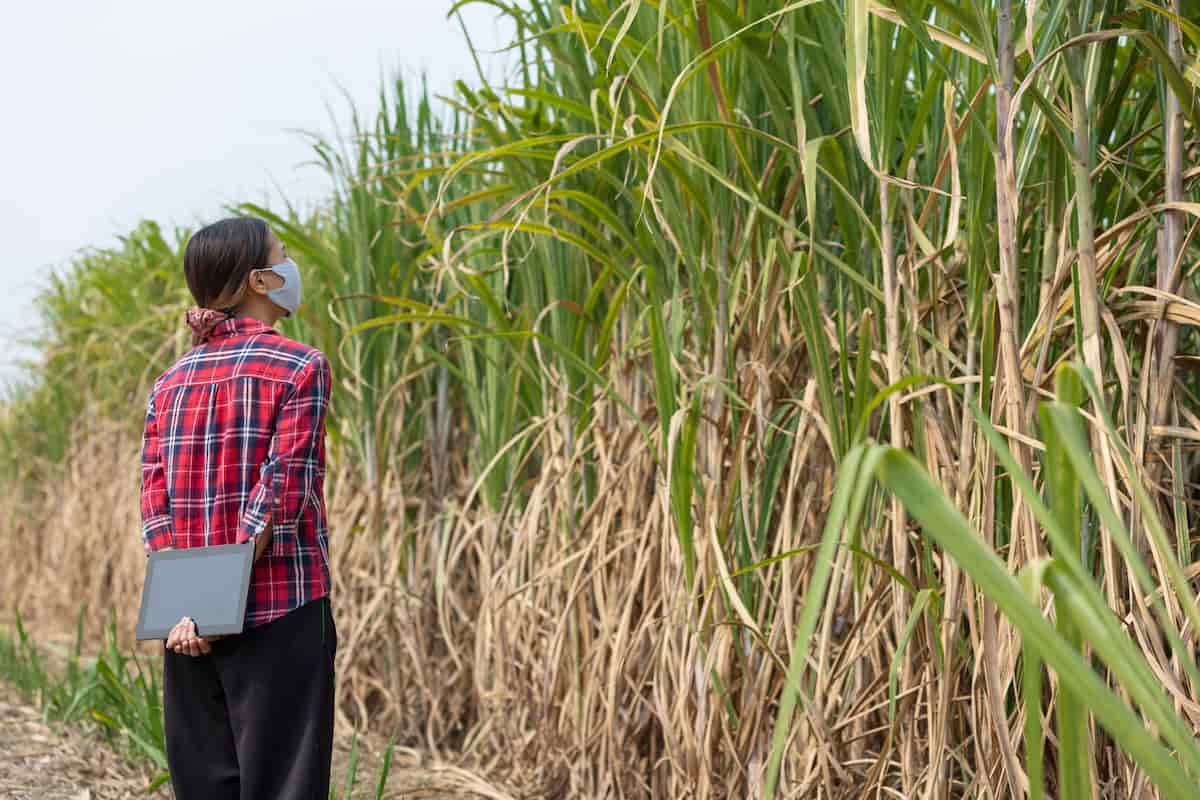Top borer is a common sugarcane pest that causes significant crop damage. Borer is a member of the Noctuidae family, and sugarcane is primarily affected by Scirpophaga excerptalis. These borers cause harm to sugarcane plants by tunneling into the stalks and feeding on the internal tissues, which can result in wilting and stunted plant development. It is essential to effectively manage top borers to minimize crop losses and maintain high yields.

Top Borer Management in Sugarcane
Life Cycle of Top Borer
The life cycle of a Top Borer takes complete metamorphosis from egg to larva, pupa, and adult. Female top borer moths lay 10-80 eggs per mass on top leaves’ undersides. Buff-colored hairs shield these clusters from predators. The eggs hatch into tiny, smooth, white, or cream-colored larvae with red mid-dorsal lines and yellow heads. The larvae ate the host plant’s stem tissues, lowering its vigor and yield.
Larvae grow and change color over 25-30 days in six instars. Fully grown larvae build a pupal cavity in the stem and pupate for 6-21 days before becoming adults. The caterpillar makes a hole in the pupal chamber for the adult moth to flee. The top adult borer is a white moth with a 25-30 mm wingspan and a buff-colored anal tuft in the female’s abdomen tip. Adults leave the pupal tube at night and live for 2-3 days. Adults do not eat and focus on mating and laying eggs to restart the cycle.
Factors Favoring Growth/ Causes or Identification of Top Borer Spread in the Field
- The adult moth has silvery-white wings with feathered tips and the female deposits eggs with yellow-brown hairs or tufts.
- The larvae tunnel through folded leaves, damaging the midrib of the plant and decreasing its yield potential. The larvae are approximately 35 mm long, with a creamy white or yellow body, a brown head without stripes, and atrophied appendages.
- The third generation causes the most damage to sugarcane, and immature plants are especially susceptible in humid environments.
- Low soil fertility, plant damage or stress, using contaminated planting material, and the proximity of infected fields can also contribute to the spread of the top borer.
Damage Symptoms of Top Borer in Sugarcane
- The top borer, known scientifically as Scirpophaga excerptalis, causes severe devastation to sugarcane crops.
- The symptoms of damage caused by the top borer in sugarcane include the appearance of hearts that have died after six months of growth and are difficult to remove.
- Additionally, parallel rows of shot holes are visible in the emerging leaves, and boreholes at the tip of the shoot can give the cane the appearance of a clumped top.
- Borer predominantly targets the apex of the canes, boring through the growing point and upper joints until they reach the sappy portion of the stem, where they feed on the tissues and destroy the cane.
- Top borers also mine their way to the base by boring into the unfolded leaves, preferably the midrib. The feeding activity of caterpillars frequently causes a reduction in cane diameter, restricted growth, and early crop maturity.
In case you missed it: Termites Management in Sugarcane: Symptoms, Treatment, Chemical, Biological, Natural, and Organic Control

Impact of Top Borer on Sugarcane Yield
Infestation of top sugarcane borer can greatly reduce crop yield and quality. The pest mainly targets the top part of the plant in the later stages of sugarcane development, resulting in a symptom known as bunchy Top. The third generation of top borer can reduce production by up to 15%, while the fourth generation can reduce weight by up to 25%. The fifth generation has a minor effect, resulting in a 1-2% decrease in yield. Controlling the spread of this pest is critical due to the lower quality and amount of juice generated by infested crops.
Cultural Management of Top Borer in Sugarcane
- Resistant or tolerant sugarcane varieties are good cultural practices. These types are naturally pest-resistant.
- Collecting and destroying pest eggs is another cultural way. Farmers can manually remove egg masses from their fields in early crop growth. It reduces bug numbers and prevents the spread to other plants.
- Crop movement can also reduce top borer populations. Planting non-sugarcane crops between sugarcane crops disrupt the pest’s life cycle and reduces its number.
- Sanitation practices like removing and destroying sugarcane crop residues after harvest can also avoid top borer infestation. These methods lower breeding sites and pest survival.
Biological Management of Top Borer in Sugarcane
Parasitoids are used to reduce top borer populations in sugarcane. Ichneumonid parasitized Gambroides (Isotima) javensis, released at 100 pairs per hectare as a prepupal parasitoid, is efficient. The parasitoid eats top borer larvae, stopping them from maturing and reproducing.
Chemical Management of Top Borer in Sugarcane
Chemical management is one of the most commonly used methods for controlling top borer infestation in sugarcane crops. Insecticides like carbofuran 5% G (33.3 kg/ha) and chlorantraniliprole 18.5% SC (375 ml/ha) can be sprayed or broadcast as one way of chemical control.
To apply carbofuran, farmers must first make a tiny furrow close to the root zone, place the granules there, and lightly water the area. The most successful management strategy for controlling top borer infestation in sugarcane crops involves manually cutting juvenile, affected tillers.
In case you missed it: Mealybug Management in Sugarcane: Symptoms, Treatment, Chemical, Biological, Natural, and Organic Control

Preventive Measures for Control of Top Borer
Tolerant or resistant varieties paired with row planting methods and intercropping with non-host crops like spices or pulses are all preventive steps for controlling sugarcane top borer. Maize and sorghum should not be intercropped because they are hosts for the sugarcane plant borer.
Pheromone traps, light traps, or aerial nets can all be used to monitor mature moths. Affected plant sections should be removed, egg masses collected during oviposition, and dead hearts destroyed during the second brood period. To help manage the sugarcane shoot borer, it is also important to protect natural predators and parasitoids.
Conclusion
A mix of strategies, including tolerant or resistant varieties, paired row systems, intercropping, and the preservation of natural predators, are needed to control sugarcane top borers effectively. Chemical control should only be employed as a last option; organic and biological techniques provide safer and more environmentally friendly alternatives.
- Beneficial Insects in Pest Management
- Natural Solutions for Pest Control in Flower Gardens
- Types of Fungicides Used in Agriculture
- Common Issues in the Fruit Development Stage of Pomegranate Farming
- Fruit Development Issues in Papaya: Easy Solutions and Treatment
- Soil-Borne Diseases and How to Protect Your Plants
- Practices to Prevent Disease Spread in the Garden
- From Wilted to Thriving: How to Treat Root Rot Naturally in Houseplants
- Natural Remedies to Cure Brown Spots on Fig Tree Leaves